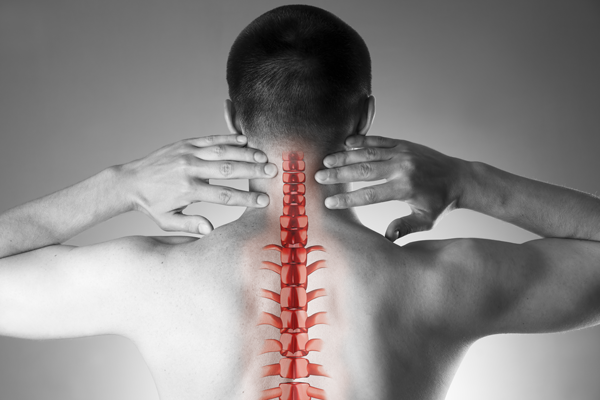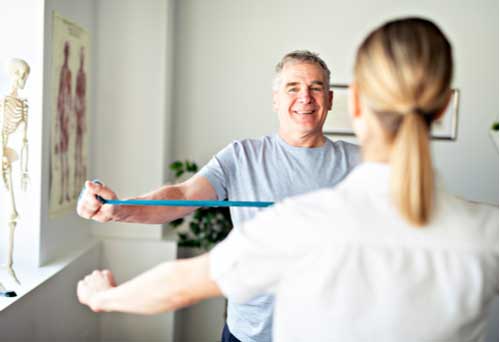- November 7, 2022
Professionals presently use several methods for chiropractic treatment in Florida. Chiropractic techniques are a natural, drug-free approach to treating pain and helping the patient gain more mobility.
Chiropractors focus on disorders of the musculoskeletal system and the nervous system and the effects of these disorders on general health. These disorders include but are not limited to:
The different chiropractic techniques available are variations of spinal manipulation. However, there is a noticeable overlap between them, and many techniques involve slight alterations of other techniques. The most effective chiropractic method is that which produces favorable results for the patient. Therefore, the procedure chosen to treat the patient largely depends on the case’s particularities.
However, there are some popularly used effective methods. According to the American Chiropractic Association, the most commonly used techniques are the diversified technique, extremity manipulating/adjusting, activator methods, the Gonstead technique, cox flexion distraction, etc. This article will discuss some of these chiropractic methods and how they are carried out.

What Do Chiropractors Do?
Doctors of Chiropractic (DCs) are healthcare professionals who use their expertise in spinal manipulations and chiropractic adjustments to diagnose and treat patients with back pain, neck pain, and headaches. They also provide care for patients with a wide range of musculoskeletal injuries and disorders, which include the muscles, ligaments, and joints.
Chiropractic procedures are popularly acknowledged as one of the safest, non-drug, noninvasive forms of neuromusculoskeletal treatments. Unfortunately, although it is safe, no health treatment is without its potential adverse effects. The risks associated with chiropractic care, however, are minimal.
Chiropractors are not just limited to spinal manipulation and physical adjustment techniques. They also advise patients on lifestyle changes, such as the importance of a healthy diet, physical exercise, and proper rest.
For the most part of their jobs, chiropractors use their hands. However, they may sometimes use a piece of equipment depending on the patient’s needs.
It is worthy of note that chiropractic manipulation is a highly controlled procedure that rarely causes discomfort. The chiropractor adapts the procedure to meet the specific needs of each patient. They also explain to the patient the extent and length of the treatment.
Common Chiropractic Methods for Chiropractic Treatment in Florida
There is no stand-alone effective method to treat pains that demand chiropractic care. The chiropractor first studies the patient before recommending a treatment plan. However, some chiropractic methods are used more than others.
We have curated a list of them to give you an insight into how chiropractic treatment in Florida works. These are some of the most popular chiropractic methods:
The Gonstead Technique: The Most Popular Chiropractic Method
The Gonstead technique is believed to be one of the most effective chiropractic techniques. It was named after its founder, Clarence Gonstead. It is a concept of chiropractic care that uses various examination methods to study pain-causing factors.
The Gonstead technique is used to restore normal disc alignment, reduce pain and stiffness, and restore maximum range of mobility. It can be administered with the patient sitting up or lying on their side. It differs from the diversified technique in that it focuses primarily on P-A adjusting rather than on rotary adjusting but is still done manually (by hand) and usually results in joint cavitation.
To determine what segments to adjust/manipulate, your chiropractor may conduct X-ray analysis, temperature gradient studies, and palpation. The Gonstead adjustment is used to treat cases like subluxation, painful and stiff necks, pain in the back areas, joint dysfunctions, and adverse migraines and headaches.
Why the Gonstead Approach Is So Popular
The Gonstead approach to chiropractic is popular for several key reasons:
- Precise analysis: Gonstead puts a priority on meticulously evaluating spine structure and function using various analytical tools like nerve charts, instrumentation, and x-ray imaging. This allows chiropractors to pinpoint the exact vertebral misalignments causing patient symptoms.
- Specific adjustments: Based on the detailed analysis, Gonstead chiropractors then make very precise and controlled manual adjustments to the affected joints. Using their hands or adjustment tools, they apply targeted force to realign them.
- Focus on patient uniqueness: No two Gonstead adjustments are alike. They are tailored and customized based on each patient’s one-of-a-kind spinal configuration, injury history, and body type. This individualized approach tends to be more effective in the long term.
- Whole body correction: While focusing on the identified problem area, Gonstead also recognizes related effects throughout the body structure. Restoring balance and communication across nerve pathways is key.
- Less force needed: Due to the specific nature of the adjustments, less force is required to achieve the desired realignment. This is gentler on the joints. Patients often report immediate improvement in symptoms as well.
The Gonstead technique grew in popularity because it emphasized detail, customization, whole-body balance, and efficient correction for optimal patient outcomes both instantly and over a complete care plan.
Diversified Technique
The diversified technique is one of the most effective chiropractic corrective methods available. It is also one of the most common techniques used by chiropractors worldwide. As the name suggests, the diversified technique involves a range of chiropractic adjustments, all of which aim to correct affected vertebral segments.
For this method, chiropractors apply a short (low-amplitude), rapid (high-velocity) thrust over restricted joints (one at a time) to restore a normal range of motion in the joint. The patient’s body is positioned in specific ways to optimize the adjustment of the spine.
The rapid thrusts usually result in popping sounds as the joints and spine return to normal alignment and trapped gas/air is released. The diversified technique is done mainly by the chiropractor’s hands and requires no tools or equipment.
Extremity Manipulation/Adjustment
Chiropractic care is not limited to your spine. Extremity manipulation/adjustment involves techniques used to correct joint fixation anywhere in the body other than the spine. These extremities include the elbow, shoulder, wrist, fingers, knees, toes, and ankles. These joints can become misaligned and cause some discomfort.
The principle behind this method is that pressure on the spine can be reduced by aligning the joints outside of the spine. This technique is painless in most cases, but it can cause some discomfort to patients with advanced joint issues. The objective is to relieve pressure, reduce pain, and increase mobility. Extremity manipulation can be used to treat headaches, neck pain, back pain, and stiff joints.
Cox Flexion Distraction
Cox flexion distraction or flexion distraction is a non-surgical spinal care treatment for several lumbar-spine conditions, including lower back pain, disc injuries, and sciatica. This method uses hands-on and mechanical manipulation/adjustment utilizing a dedicated table where the spine is tractioned and flexed forward.
Many spinal manipulation techniques require force to be applied around the spine; flexion distraction isn’t one of those. Instead, the spine is gently stretched in this procedure, allowing the chiropractor to use a relaxing pumping method to align the spine.
Cox flexion distraction can:
- Reduce pain, weakness, inflammation, and numbness by healing herniated discs.
- Restore normal motion and function to intervertebral joints.
- Assist in the drainage of waste products from the spinal canal and discs.
Activator Method
The activator method is recommended for treating neck and back pain and also pain in the extremities (areas outside of the spine). In this technique, a Doctor of Chiropractic uses a small handheld spring-loaded device called an activator that delivers a small impulse to the spine.
Instead of manipulating/adjusting forces being delivered by hand, force is generated with the activator that delivers a lighter but faster thrust than those delivered by hand. The activator adjusts the nervous system’s tone and can treat various conditions, from headaches to lower back pain issues.
The advantage of this tool is that it enables chiropractors to discover certain affected areas with a short, low-force pulse. In addition, the speed prevents the body from tensing up, which is a common response during other manual manipulation techniques.
Thompson Drop Technique
The Thompson drop technique is a specific chiropractic adjustment method used to treat spinal joint dysfunction and improve mobility. It was developed in the 1960s by Dr. J. Clay Thompson, an influential chiropractor seeking more precise adjustment methods. Some key points about it include:
- It uses a specialty table that has sections which drop slightly when a thrust is applied
- The drop action helps the body relax, allowing for quick but gentle adjustments without force or twisting
- The chiropractor will have the patient lie on the table and then apply a quick, light thrust by hand to a restricted spinal joint
- This activation causes the corresponding table section to drop up to 2 inches as the joint is mobilized
- The drop is designed to restore normal joint motion, stimulate healing, decrease nerve interference, and relax muscles
- It is frequently used to treat cases of spine misalignment, scoliosis, sciatica, neck/back pain, muscle spasticity, and joint inflammation
Patient benefits of this gentle yet highly targeted technique include pain relief, improved mobility, good mechanics for the spine and body, and faster recovery time.
Which Chiropractic Technique Is Right for You?
Choosing the right chiropractic technique depends on a few key factors:
- Your specific health goals: Are you seeking relief from acute back pain? Want to improve posture over time? Address a sports injury or chronic migraine issue? Your aims will help determine if certain techniques are better suited.
- Cause of the pain/dysfunction: Techniques that excel at joint restriction may differ from those targeting herniated discs or pinched nerves. An evaluation of the underlying issue is needed.
- Force preference: Methods range from high-velocity moderate force adjustments to very subtle mobilizations. Rate your comfort with force levels.
- Adjunct therapies needed: Do you require extra therapies like traction devices or instrument-assisted methods? This will narrow options.
- Treatment schedule: Some intensive techniques require a few visits over days or weeks. Others space out sessions over months. Consider time commitment.
In general, speak to chiropractors about recommended techniques based on your health status. Many utilize a blend based on what benefits you most. With an open dialogue about goals, causes, and preferences, the right chiropractic approach can be incorporated into your care plan.
Get the Best Chiropractic Treatment in Florida
Are you searching for the best chiropractic injury treatment center near you? Contact us today at Specific Care Chiropractic for the best care at the hands of knowledgeable and experienced chiropractors. We will give you the most effective chiropractic treatment for your specific condition.







